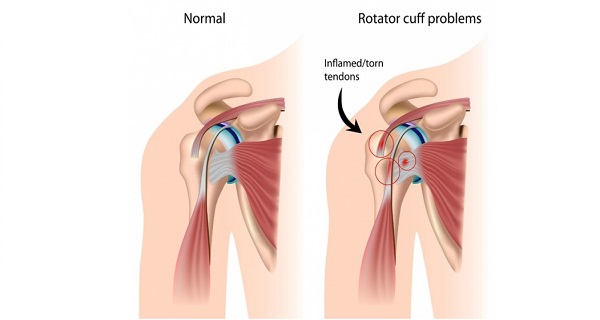Tendinitis is the inflammation that originates in the area of the tendon, the tissue that joins the muscle with the bone. This problem occasionally comes with a swelling of the tendon.

Also, it is usually a chronic pathology and has a high level of recidivism in the person who has previously suffered.In addition, it causes an annoying pain and increases sensitivity in this joint. While tendinitis can occur in any of your tendons, it’s most common around your shoulders, elbows, wrists, knees, and heels.
One of the main causes is muscle overload or injury. It also occurs due to advanced age since as you age the tendons lose their elasticity.
Occupation
Tendinitis is more common in people whose jobs involve:
- Repetitive motions
- Awkward positions
- Frequent overhead reaching
- Vibration
- Forceful exertion
Sports
You may be more likely to develop tendinitis if you participate in certain sports that involve repetitive motions, especially if your technique isn’t optimal. This can occur with:
- Baseball
- Basketball
- Bowling
- Golf
- Running
- Swimming
- Tennis
The symptoms that this disease presents are the following:
– Pain when moving the heel.
– Increased discomfort with movements.
– A lot of pain during the night.
Lifestyle and home remedies
To treat tendinitis at home, R.I.C.E. is the acronym to remember — rest, ice, compression and elevation. This treatment can help speed your recovery and help prevent further problems.
- Rest. Avoid activities that increase the pain or swelling. Don’t try to work or play through the pain. Rest is essential to tissue healing. But it doesn’t mean complete bed rest. You can do other activities and exercises that don’t stress the injured tendon. Swimming and water exercise may be well-tolerated.
- Ice. To decrease pain, muscle spasm and swelling, apply ice to the injured area for up to 20 minutes several times a day. Ice packs, ice massage or slush baths with ice and water all can help. For an ice massage, freeze a plastic foam cup full of water so that you can hold the cup while applying the ice directly to the skin.
- Compression. Because swelling can result in loss of motion in an injured joint, compress the area until the swelling has ceased. Wraps or compressive elastic bandages are best.
- Elevation. If tendinitis affects your knee, raise the affected leg above the level of your heart to reduce swelling.
